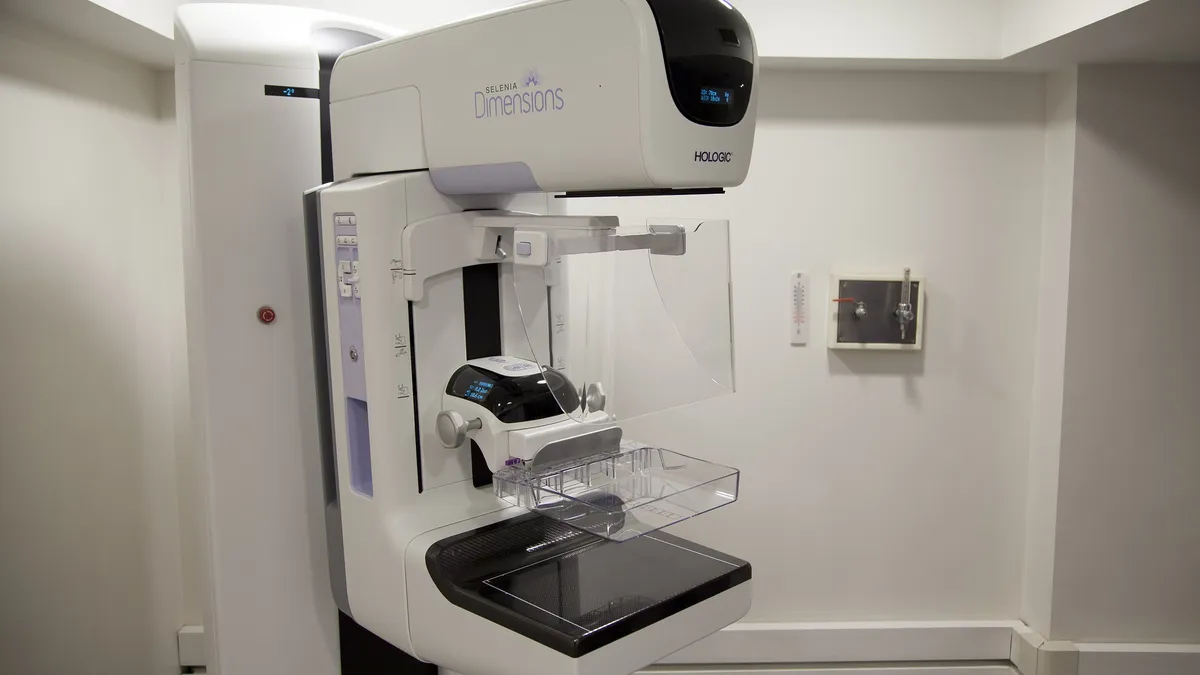Dive Brief:
-
A meta-analysis of 24 studies has found the move from film to digital mammography failed to deliver the hoped-for health benefits anticipated from the imaging technology.
-
The research, published Tuesday in the Journal of the National Cancer Institute, shows the use of digital versus film had no effect on the likelihood of a tumor being detected between screening scans.
-
Despite that finding, the researchers still contend the move to digital may have been beneficial overall, pointing to efficiencies in service screening as an example of how the technology has helped improve healthcare.
Dive Insight:
FDA approved GE Medical’s Senographe 2000D in 2000, marking the start of the switch from film to digital for mammograms. At the time, some physicians predicted the “far superior” images captured digitally would result in the earlier detection of cancers and reductions in false positives.
Now, 20 years later, there is a body of research looking at whether such predictions came true. With the studies reporting “conflicting and heterogeneous results,” a team at the University of Sydney did a literature review and meta-analysis to try to determine whether the move to digital has improved health outcomes.
The pooled analysis of the 24 studies, which included more than 16.5 million screening examinations, found the rate of interval cancers remained the same after the move to digital. Interval cancers are tumors detected between periodic screening scans. Healthcare systems try to reduce the rate of interval cancers to ensure the timely treatment of tumors.
However, the meta-analysis found that digital screening failed to reduce the rate of interval cancers despite being associated with an uptick in cancer detection. The researchers attributed the increase in cancer detection to the identification of more cases of ductal carcinoma in situ (DCIS), a noninvasive, treatable form of breast cancer.
DCIS indicates a patient is at higher risk of developing invasive breast cancer, suggesting there may be some benefits to detecting it early. However, the researchers said the lack of a change in the rate of interval cancers implies “extra detection may not be delivering additional benefit.” Any benefits of moving to digital were mitigated by an increase in false positives after the technology transition.
The results have likely come too late to affect the move from film to digital. According to the authors of the study, most screening programs have already adopted digital mammogram technology and, in doing so, realized efficiencies associated with the electronic storage and transmission of images.
Nonetheless, with Google Health and other organizations working on advances such as the application of artificial intelligence to screening, the researchers contend the findings have important implications for the current healthcare environment.
“At a time when new mammography and other imaging technologies are proposed for adoption in population screening, it is critical to carefully consider and evaluate the effect this could have on health outcomes,” Rachel Farber, the lead author of the study, said in a statement.






